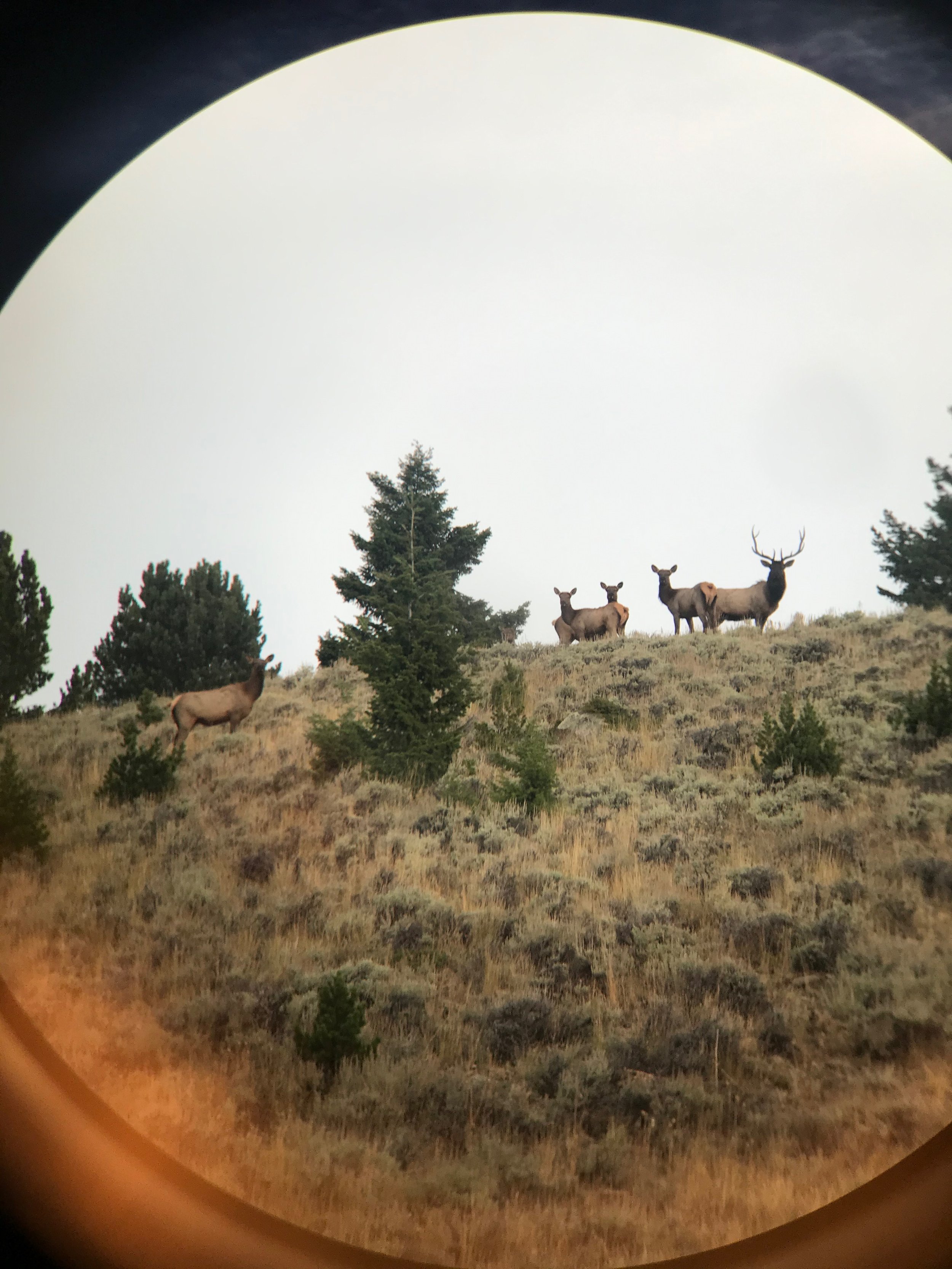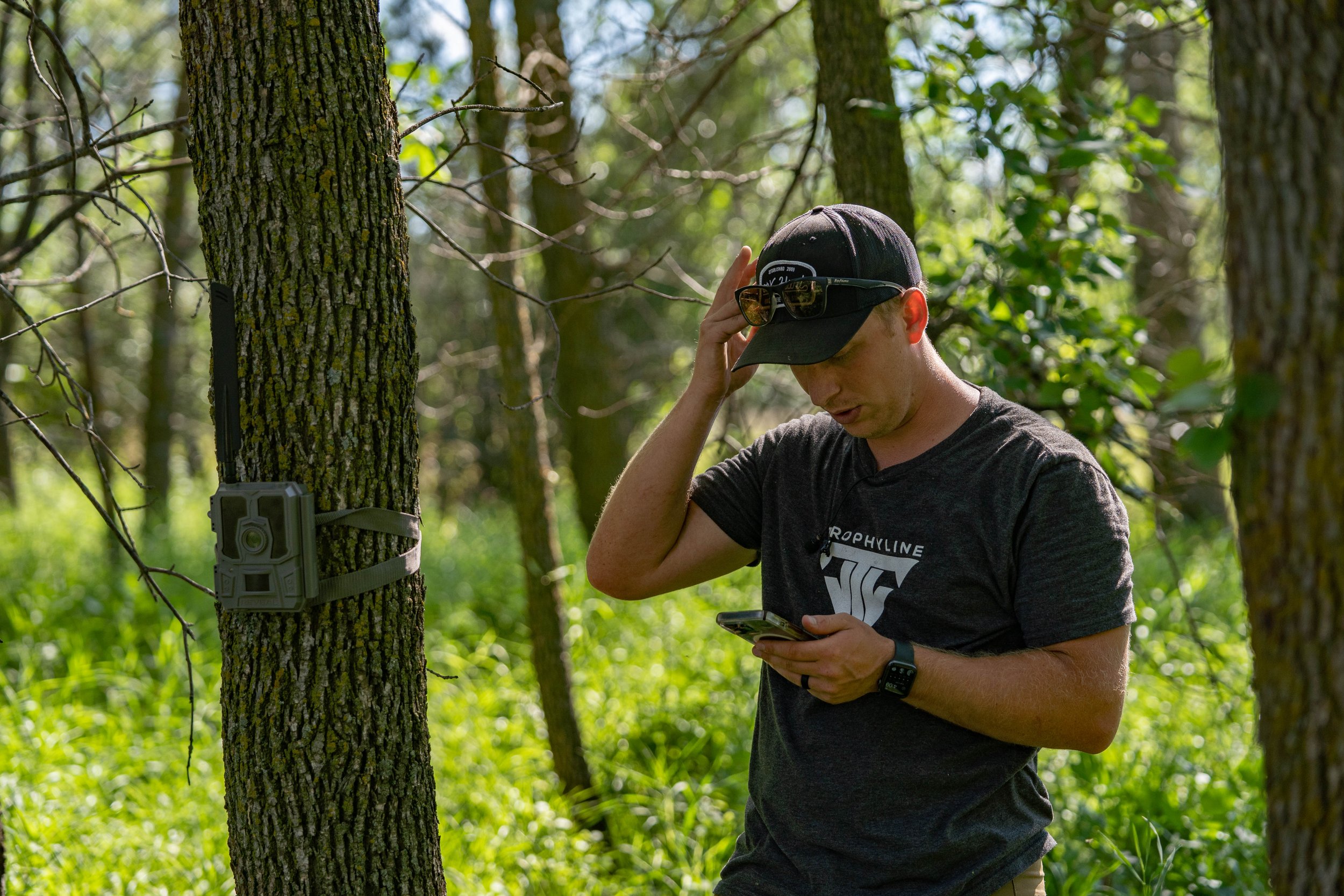By Alex Comstock
All across america, deer hunters alike are hanging tree stands this time of the year. Hang on stands, ladder stands, prepping climber stand trees, you name it - it's going up. Part of deer hunting that I love so much is how we can all do things differently, use different gear, or have different opinions on certain things all in search of mainly the same goal - to successfully hunt deer.
One of those opinions that differ among hunters is what to use in regards to get up a tree when using a hang on stand. For bowhunters, I'd argue a hang on stand is the most popular type of treestand. I own a lot of them, and use both screw in steps and climbing sticks. Today, I wanted to analyze the difference between them, and what might work best for you.
Screw in Steps
Advantages: Screw in Steps have a couple major advantages in my mind. First of all, they are small and you can just throw them in your backpack. I actually find this most useful when going in to hang multiple stands in a day way back on public land. If I am spending a lot of time scouting where I want a stand, have to walk a long ways, and don't want to be hauling around climbing sticks, I might bring in screw in steps for those particular stand setups.
Another advantage I've found using screw in steps is that they are more inconspicuous. I actually value this the most when hunting public land, as to not draw attention to other hunters. Usually on public, I'm not where other hunters are spending time, but in the rare occurrence that there is somebody back where I am, I don't want my treestand stolen. These can be harder to see from a distance, and could potentially help prevent theft.
Those are just a couple of my favorite reasons to use screw in steps, but why don't I use them all of the time?
Disadvantages: For the couple reasons that I do use screw in steps, there are a few disadvantages that I don't like about them. My biggest dislike about screw in steps is how long it sometimes takes to actually screw them in and get all set up in the tree. Maybe I'm just bad at it, but I don't like having to screw in a step, go to step up and realize that I screwed it in way too high or not high enough. I then unscrew the step, and screw it back in somewhere that is a more comfortable spot to step up. This can be time consuming, and sometimes I simply just get annoyed when using these.
Another disadvantage of these is safety. The number one thing that you should be concerned about when hanging a treestand is safety. These can get a little dicey if it's raining/snowing and they're slick. Also, it can be somewhat tough to climb in the dark, or climb down after an evening sit. Simply put - with these you need to be careful. I know people that won't hunt a stand if I've got screw in steps put in, because they don't find them safe at all.
Climbing Sticks
When using hang on stands, the other popular option is to use climbing sticks. When I am talking about climbing sticks, I am referring to the small sections where you usually put somewhere between three and five sections of climbing sticks to get up a tree. These are my preference, but that doesn't mean they are for everyone. Here's how I view the advantages and disadvantages.
Advantages: First of all, once you get good at putting up climbing sticks, you can do it awfully quick. I do a lot of hang and hunts, or running and gunning as some people call it, and I like to use a light stand and climbing sticks. If you are doing a hang and hunt setup, you can strap the climbing sticks to your stand, and then develop a system to hang them up one by one without having to go back down to the base of the tree at all.
Another pro that I like about climbing sticks is the ease of use. There are some trees that can be tough to screw in steps, but that's something you don't have to worry about with climbing sticks. Any tree with the right size, you can simply throw the strap around the tree, tighten it down, step on it to secure it, and keep scaling the tree.
Lastly, just how the screw in steps safety was a disadvantage, climbing sticks present the advantage of being a lot safer in my mind. They can still become slick during a rain or snow, but there is a lot more structure to grab on to and step on to. Some even provide a grip on the top of each section. They are also much easier to see in the dark for when you climb up in the morning and down in the evening.
Disadvantages: Climbing sticks can at times be difficult to use if you're trying to get multiple stands up, and you've got to walk a long ways to do so. At times they can be a lot to haul, simply just because they weigh more, and they don't fit in your backpack like screw in steps.
The other disadvantage that comes to mind is that every once in awhile there are those gnarly trees that have big limbs going every which way that provide a lot of great cover, but you can't fit climbing sticks in between all of the limbs. These types of trees are great for screw in steps, but if you only brought climbing sticks, you either have to come back, or will have to get a stand up in a different tree that might not be as good.
Conclusion
Like I said in the opening, almost every deer hunter has a different opinion on something when it comes to deer hunting. The debate between screw in steps and climbing sticks is continually ongoing. My advice to you? Try them both, and figure out which one works best for you in certain situations.































